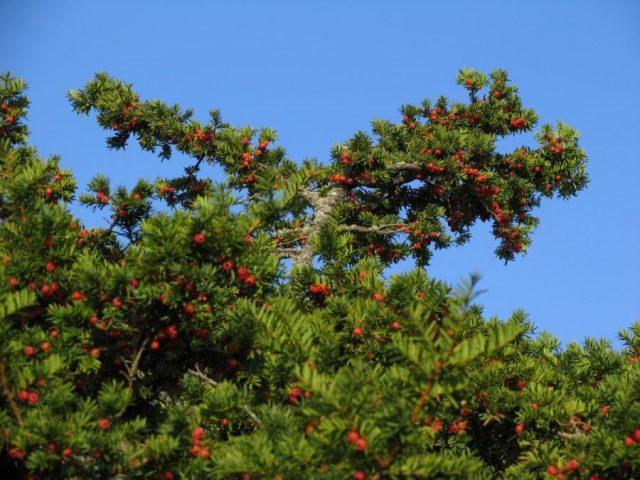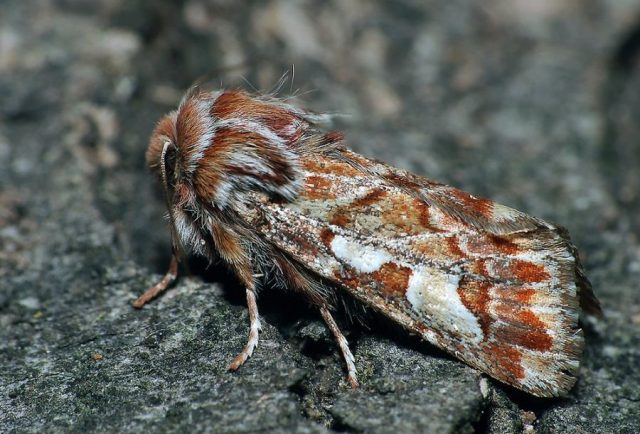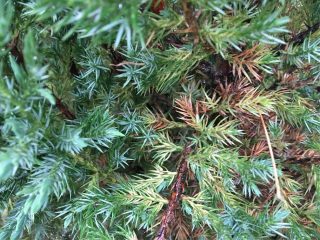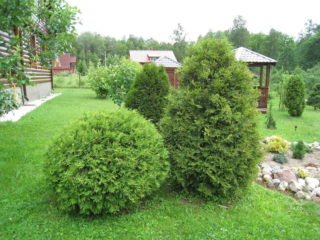Content
The yew tree is highly decorative, which is why it is often grown in garden plots. Planting a crop is quite simple; you only need to follow the basic rules.
What does a yew tree look like?
Yew (Taxus) is a slow-growing tree or shrub from the Yew family, up to 10-20 m tall. It has a reddish-brown thin bark, the trunk girth can be 1.5 m. The leaves are linear, on short petioles, flat. Male and female single round cones are formed in the axils of the plates on the underside of the shoot. The tree's seeds ripen within one season.
The plant is poisonous. Only the aryllus, a juicy red, goblet-shaped appendage surrounding the seed, does not have toxic properties. The tree is distributed throughout Europe and is found in the northwestern regions of Africa, as well as in Southwestern Asia and Iran.
Where does yew grow in Russia?
Photos and descriptions of the yew plant indicate that the culture in Russia is found mainly in the North Caucasus.Sometimes the tree can also be seen in the Kaliningrad region and Crimea. Yew inhabits plains, mixed forests and mountains at altitudes of up to 2000 m.
How long does yew grow?
The tree grows very slowly and grows only 2-3 cm per year. Specimens about 30 years old can rise only 1.5 cm above the ground. At the same time, the lifespan of a tree, depending on the type, is 1500-4000 years.
Varieties and varieties of yew
Photos of a yew tree and its leaves show that the plant is represented by many species. They differ from each other in the height and shape of the crown, as well as in their developmental features.
Berry
Berry yew (Taxus baccata) is one of the most common species. It is quite rare in natural conditions, but the plant’s range is very wide. You can see it in Europe, and in the Crimea, and in Asia Minor, and in Algeria.
This type of yew is a tree up to 20 m tall with a rounded, uneven crown. The bark of the plant is red-gray, smooth or lamellar, the leaves are narrow and long, dark green in color. The species blooms in April and May.

Due to its rich composition, yew berry is widely used in folk medicine.
Far Eastern (holly)
Far Eastern, or holly yew (Taxus cuspidata) is a tall tree up to 20 m above the ground with outstretched or raised skeletal branches. The leaves of the species are dark green, with a well-defined midrib, up to 2 cm long, arranged in two rows on the shoots. The crown of the tree spreads up to 2.6 m wide. Under natural conditions, the holly species is found in the Far East in Russia, as well as in China, Korea and Japan.

The Far Eastern yew has been known in culture since 1854
Canadian
Canadian yew (Taxus canadensis) is a low-growing shrub with raised, spreading branches. The leaves of the plant are short, up to 2 mm wide, on small petioles, and olive in color. The species has been cultivated since 1933 and is found in its natural environment in Canada and the USA.

Canadian yew is characterized by increased frost resistance
Pacific (short-leaved)
Pacific yew (Taxus brevifolia) is an evergreen tree up to 25 m tall with a trunk girth of up to 130 cm. It has horizontal or raised branches that form a wide-conical crown. The leaves of the species are linear, bluish or yellowish in the upper part, up to 2 cm long.
The plant is found in Canada, as well as in the states of Alaska, California, Nevada, Idaho and Oregon in the USA. Settles mainly in mountain ranges, canyons and cliffs.

Pacific yew is resistant to low temperatures and tolerates lack of light well
Average
Medium yew (Taxus media) is a hybrid plant bred on the basis of holly and berry species. Distinctive features of the tree are blunt bud scales and leaves with a well-defined vein in the middle. The species has good winter hardiness and takes root well in cold climates.

The average yew was obtained through selection in the USA at the beginning of the twentieth century
Relict endangered
Relict yew (Taxus floridiana) is a very rare species that is found exclusively in the state of Florida on the banks of the Apalachicola River in a limited area. Forms mixed forests with holly, American beech and magnolia.
The relict yew fell into the category of endangered species due to human activity and forest fires.In addition, white-tailed deer, which feed on young shoots of the tree, contribute to the decline in the plant's population. In recent years, animals have been actively increasing their population due to the ban on shooting. The relict yew suffers greatly in this case, since it almost always dies from damage.

Relic yew is very sensitive to sunlight and settles exclusively in shaded areas
Planting yew in open ground
In its cultivated form, yew grows in the Moscow region - it is bred as an ornamental tree. Planting and care are not associated with great difficulties, but require attention from the gardener.
On the site for the tree, you need to choose an open and warm, moderately lit place with cover from strong winds. Any type of yew needs nutritious and loose soil; black soil and loam are best suited. It is recommended to plant on neutral soil - almost any variety will take root in it. Only the Canadian and berry species tolerate slightly acidic soil, and the holly and medium species tolerate alkaline soil.
Yew is planted for outdoor maintenance in April or early May. In warm regions, it is also possible to carry out the procedure from the end of August to October. Before planting a tree, the area must be properly prepared. The soil is carefully dug up and fertilized with organic matter, and complex mineral fertilizing is also applied.
Direct planting of any type of yew in the garden is carried out according to the following scheme:
- Dig a hole up to 70 cm deep in the area.
- Fill the bottom with drainage and a soil mixture consisting of garden soil, sand and peat.
- Water the seedling abundantly, and then place it in the center of the prepared hole.
- The roots of the plant are straightened to the sides, the neck of the trunk is left flush with the surface.
- Fill the voids with the remaining substrate and compact the soil with your hands.
After planting, the tree should be watered generously with warm, settled water. In this case, part of the liquid can be spent on irrigating the seedling along the crown. When placing several plants on a site, you need to leave 1-3 m of free space between them.

It is recommended to plant any type of yew on a site on a dry but cloudy day.
Rules of care
The poisonous yew plant has rather modest requirements for cultivation. Several points need to be paid attention to:
- Watering. The tree requires intensive moisture in the first year after planting. At the same time, it is not recommended to waterlog the plant; its roots will begin to rot. In rainy weather, watering is stopped completely. The tree needs to be moistened with lukewarm water with a soft composition; it is added to the soil only after sunset.
- Feeding. For the first time, it is allowed to fertilize yew with complex minerals a year after planting. Fertilizing is applied in the spring and then again in the fall, but in a dosage halved. At the end of the season, it is recommended to cover the soil in the area with humus.
- Trimming. Most tree species require periodic pruning after reaching ten years of age. Pruning is carried out twice a year - in the spring to form the desired contours of the crown and in the fall for sanitary purposes.
When growing a tree on a plot, the soil at the roots should be loosened regularly so that a hard crust does not appear on its surface. It is also allowed to mulch the soil with straw, pine needles or wood chips - this will slow down the evaporation of moisture.
Diseases and pests
With good care, yew rarely suffers from diseases and insects. But under unfavorable conditions, trees of different types can infect:
- root rot - the disease develops on waterlogged soil, the plant stops receiving normal nutrition and dies;
Root rot is especially dangerous for young yew trees
- fusarium - you can recognize the disease by the browning and shedding of needles;
Fusarium often affects yew on heavy clay soil
- brown schutte - the tree’s needles turn yellow in the spring, and gradually a black sticky coating appears on them;
Yew needles, darkened by brown shutte, do not fall off the shoots for a long time
- pine cutworm - pest larvae eat young greenery, buds and annual shoots;
It is recommended to treat yew with insecticides against pine cutworms during bud break.
- spruce needle beetle - small caterpillars, almost invisible against the background of pine needles, feed on tree leaves and entwine them with cobwebs;
The fight against spruce needle beetle is carried out using systemic pesticides, damaged needles are burned
- false scale insect - a yellow-brown insect reaches 3 mm in length, damages bark and wood.
The false scale insect is quite difficult to notice, since it overwinters and reproduces under the bark
To protect against diseases when growing different types of crops, it is necessary to control the volume of watering. Most fungi grow in swampy soil. To prevent pests, yew is regularly irrigated along the crown, and with the onset of autumn, the soil at the roots is thoroughly cleaned of plant debris.
When a tree is infected with parasites, it is necessary to spray it with insecticides or home remedies - soap solution or wormwood infusion.Medications with a high copper content are good for diseases.
How does yew reproduce?
Most often, to increase the population of the crop, yew is propagated by cuttings in the spring. From a healthy, strong plant, cut off a shoot up to 15 cm long with 3-4 lateral branches and pinch the latter. Then the cuttings are placed in a solution of a growth stimulator, after which they are placed in a damp substrate and covered with a cut bottle. When the shoot begins to grow, it can be transplanted to a permanent place.
To propagate the crop, you can also use the seedling method. To understand how to propagate yew by seeds, you need to study the standard technology used for conifers. During the winter, plant material is stratified in damp sand in the refrigerator, and with the onset of spring it is sown in a loose nutrient substrate. You can transplant yew to the site at the beginning of summer. But experienced gardeners recommend leaving the plant indoors for 2-3 years and only then transferring it to open ground.
Photo of yew in landscape design
Various types of yew trees look attractive in the landscape of a summer cottage. Typically the culture is used:
- for the formation of small coniferous groves;
Slow-growing yew trees do not clutter up the area even when planted en masse
- to create a hedge;
Yew trees have a dense crown and cover the area well from prying eyes
- for the formation of artistic compositions;
Mature yew trees tolerate topiary well
- for decorating rock gardens;
Low-growing species of yew trees allow you to decorate wastelands and slopes
Yew on the site is often combined with junipers, cypresses, pines and thujas. Also, tree species are allowed to be placed next to fruit crops and perennial flowers.
Before creating a composition, you should make sure that the selected plants have the same care requirements. Any type of yew should not be planted next to moisture-loving crops or next to perennials that need a lot of sun.
Conclusion
The yew tree has modest care requirements, looks beautiful in landscape design and goes well with most plants in the garden. The culture is highly resilient, develops very slowly, but lives for hundreds and thousands of years.


















